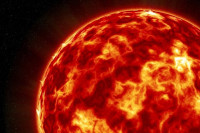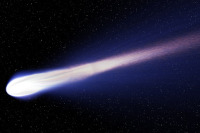
The Northern Lights, or Aurora, is a breathtaking phenomenon in the sky. It can be seen simultaneously in the southern and northern hemispheres in the area around the Arctic and Antarctic. People have always tried unsuccessfully to explain its revelation. Today we already know what is causing it. So why and how does aurora come about?
The aurora is visible between 10° and 20° from the geomagmetic pole and is typically 3° to 6° wide. It is visible in all time zones. It is called aurora borealis in the north and aurora australis in the south. Its shape is almost identical in the north and in the south. It most often shines in green, but exceptionally it can be blue or red.[1]
Sometimes it is possible to see aurora at a greater distance from the geomagnetic pole. The reason is strong geomagnetic storms on the Sun. The strongest recorded occurred in 1770 and 1859, when it was possible to observe aurora borealis, for example, in Kyoto, Japan or Boston, USA. The glow was said to be so strong that it was possible to read a newspaper in the middle of the night. [2]
Auroras are caused by solar wind particles that are not reflected by the Earth's magnetosphere. The captured particles spiral to the Earth's atmosphere. In the atmosphere, solar wind particles collide with the gases present to emit electromagnetic radiation. Oxygen emits green and red, hydrogen red and nitrogen blue.[3]
Interestingly, aurora is not unique in our solar system. It has been observed on other planets, on the moons of other planets, and even on a comet.[4]




